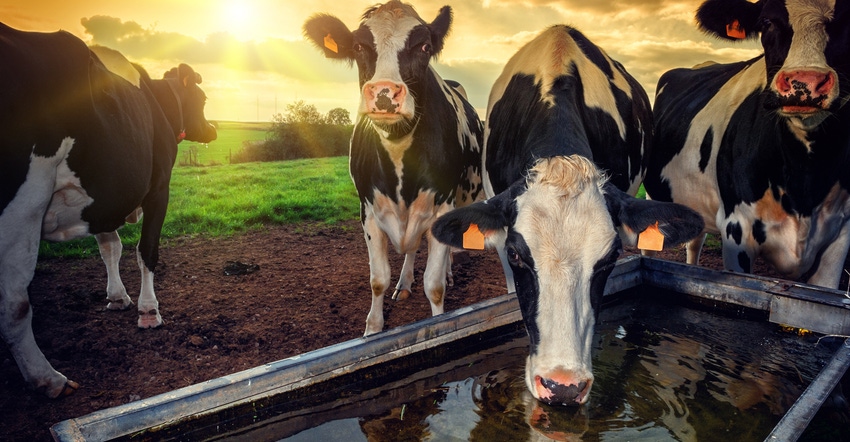October 26, 2022

At a recent East Central Grazing Alliance pasture walk in Noble County, Ohio, I was invited to speak on the broad topic of water for livestock. Hopefully by now we all know water is the most important nutrient for all living organisms, and without water, production agriculture today would look very different.
Water quantity
One of the first discussion points regarding water is quantity — how much water do we need for animals to perform at optimal levels? Do we have enough flow rate from our source to maintain several animals drinking at once, and is our drinking tank large enough?
Water requirements for beef cattle depend on body weight, stage of production (gestation vs. lactation) and temperature.
Generally, cattle will consume 1 gallon of water per 100 pounds of bodyweight during cooler weather, and nearly twice as much on hotter days.
Springs are handy sources of water, especially in eastern Ohio. However, often spring developments and drinking troughs are in undesirable locations in our pastures, valleys or lying wet spots. Even though additional infrastructure is required, consider installing a water-holding tank and pumping water to where it is needed. Ideally, cattle should not have to travel more than 800 feet to walk to water.
If you have been following along with current events and recent weather patterns, we have been very fortunate to continue to get timely rainfall here in the eastern Corn Belt. Our farming and ranching colleagues in the western half of the U.S. have not been as fortunate and have had to alter their management practices, or cull large numbers of beef cows as the drought lingered on.
Water quality
We cannot manage what we do not measure. There are several accredited laboratories that regularly test water quality for livestock operations.
When evaluating results of a water sample, there are several key pieces of information that should be evaluated. At a minimum, a water quality analysis for livestock will include total dissolved solids or salinity, pH (acid or alkaline value), nitrates, and sulfates.
Sedimentation and total dissolved solids
Extremely poor water quality can have adverse effects on animal performance and health. Water quality often varies depending on the source, with groundwater often being higher quality than surface water. Surface water is more likely to contain greater amounts of sedimentation due to runoff and erosion.
Occasionally, I get asked about levels of salt in water. We measure salinity most often as part of total dissolved solids, or TDS. To a degree, cattle seem to adapt to moderately high levels of mineralized water and will often avoid highly concentrated saline water.

When evaluating water quality, TDS isn’t the only factor to consider, but if there has been a noticeable reduction in water consumption, it is a good place to start.
pH
Water pH will indicate acidity or alkalinity. A pH of 7 is neutral, with acidic water being less than 7, and alkaline water being greater than 7. Water pH will depend on the source, and if it is groundwater, subsoil properties will have a great impact on pH. Limestone groundwater tends to be more neutral or alkaline, whereas groundwater in proximity or a coal seam may be more acidic.
Nitrates and sulfates
Nitrates in water are often due to some form of contamination, commercial fertilizer, manure or decaying organic matter. While water can be a source of nitrate poisoning, forages (especially summer annuals) can also be a potential source.
Ruminant animals are more sensitive to high levels of sulfate in water than pigs and poultry. Ideal sulfate levels for cattle are less that 500 parts per million for growing calves and less than 1,000 ppm for mature cattle.
Elevated sulfur intake can bind copper in the diet. If cattle test deficient for copper, a water sample should be tested for sulfates.
If you have water quality concerns, reach out to your local Extension office for testing and sampling information.
Garth Ruff is the OSU Extension Beef Field Specialist. He is also a member of the OSU Extension Beef Team that publishes the weekly Ohio BEEF Cattle letter which can be found at beef.osu.edu.
Source: OSU Extension
You May Also Like




